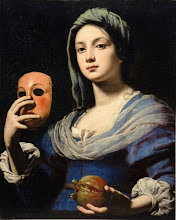
Navajo sand painting
In Sanskrit, the word for it is sukshma (the 'u' pronounced like the 'oo' in book). It is the unseen anatomy of the Self, and was once a litmus test for great art, before our senses became dulled by empty intellectualism. The sense of subtlety persists more in classical music culture than in the visual arts, where shock value has more or less obliterated it.
People conditioned by religious or intellectual dogma, often react to art or writing that has a subtle dimension, or points to something beyond the gross, branding it "occult". Without Self-realisation it is difficult to discriminate between what is subtle and what is occult, particularly where traditions which may have originated with Self-realised figures have become mixed over the centuries with magic practices (by magic read: forms of gross ritualism aimed at fulfilling desires other than the pure desire for Self-hood)
The term subtle body is a term for the pranic, mental and consciousness bodies considered collectively, and called Sukshma sarira in Sanskrit. According to the traditional teachings of Yoga, human beings are constituted not only by a gross physical form but by a series of energetic psycho-spiritual subtle bodies each of increasing subtlety and metaphysical significance. Derived principally from the Indian spiritual tradition where they were originally conceived as sheaths covering the immortal soul, these concepts spread throughout Asia, as far East as Japan, and may have influenced the mystical aspects of Judaism and Islam. Knowledge of the subtle body reached the West in the late nineteenth century, brought largely by people who had no direct experience of it in meditative practice.
The concept of one or more subtle bodies in human beings is a common philosophical element in diverse spiritual traditions worldwide (it is even found in the Americas, in the lore of the Hopi holy men, which leads to the conclusion that it is a deep and vital knowledge that emerged there from the collective unconscious, independently of other traditions. Though the concept of the subtle body has been tarnished by association with occult tantric practices in more recent times, it is important to have an understanding of the anatomy of one's subtle self in order to be truly well, in the sense of being an integrated whole.
The concept of one or more subtle bodies in human beings is a common philosophical element in diverse spiritual traditions worldwide (it is even found in the Americas, in the lore of the Hopi holy men, which leads to the conclusion that it is a deep and vital knowledge that emerged there from the collective unconscious, independently of other traditions. Though the concept of the subtle body has been tarnished by association with occult tantric practices in more recent times, it is important to have an understanding of the anatomy of one's subtle self in order to be truly well, in the sense of being an integrated whole.
After getting shocking news, a person may put a hand on their heart. When something strikes us as really wrong, we may feel 'sick to the stomach'. These are examples of the fact that awareness is not confined to the brain, but is suffused throughout the body, particularly in the seven major nerve plexuses governing the main organs of the physical body. Over time, yogis in ancient India and Amerindian healers, for example, gained knowledge of the intricacies of the subtle body, beyond the basic reactions mentioned above, and how various emotional or spiritual states correspond to different parts of the body. They achieved this through the purification, concentration and expansion of awareness in meditation.
Art is a step from what is obvious and well-known toward what is arcane and concealed.
Kahlil Gibran



















No comments:
Post a Comment